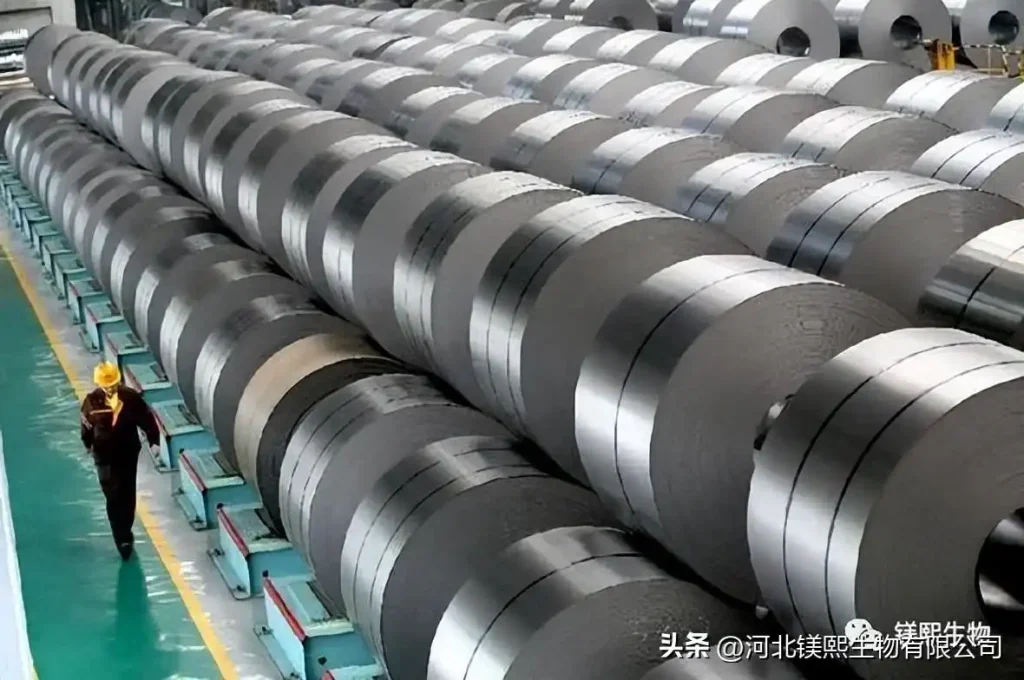Tibet Mag stated that silicon steel grade magnesium oxide needs to meet the quality and technical indicators of MgO>98%, CaO<0.5%, and Cl<0.02%. The impurity CaO will be hydrated into Ca(OH)2 in the slurry and coated on the surface of the steel plate to absorb CO2 in the air to form CaCO3. Under the action of water, the generated HCl will seriously corrode the surface of the steel strip. In addition, metal impurities such as iron will affect the whiteness of magnesium oxide and product quality, and these harmful impurities need to be removed.
Carried out the research on the removal of impurities in the process of preparing silicon steel grade magnesium oxide by carbonization method. Using light-burned magnesium oxide powder as raw material, heavy magnesium water was obtained through digestion and carbonization, and the complexing agent was used to complex the impurities calcium and iron in the heavy magnesium water. Combined masking, and then pyrolyzed to obtain basic magnesium carbonate, and calcined to obtain magnesium oxide with low calcium and iron impurity content. Studies have shown that the use of triethanolamine complexing agent alone, combined use of oxalic acid and citric acid complexing agent can make iron and calcium ions in heavy magnesium water form a stable complex, and do not precipitate impurities during the pyrolysis of heavy magnesium water to achieve purification The purpose of basic magnesium carbonate and magnesium oxide.
The impurities that are easily introduced by using brine as raw material to prepare magnesium oxide are chloride ions, sulfate radicals, carbonate radicals, boron, silicates, alkali metals and heavy metal ions. In addition to chloride ions, other impurities can generally be removed by precipitation. First, CaCl2 solution is added to the brine, so that sulfate and carbonate can form CaSO4 and CaCO3 to precipitate and be removed. Adding an appropriate amount of barium chloride can further purify the sulfate in the brine. . Then add an appropriate amount of ammonia water to adjust the pH value of the solution, which can generate a small amount of Mg(OH)2, colloidal precipitation, the precipitation has a huge specific surface area, can absorb and wrap various impurities such as Fe(OH)3, Al(OH)3, etc., at the same time it It may also be isomorphously replaced by Fe, Ni, Mn and other ions to form a solid solution, which can purify brine. The control of chloride ions in the product can be realized by controlling the content of magnesium chloride in the brine.
It was found that the initial concentration of the reactant had a great influence on the content of chloride ion in the product. When the concentration of magnesium chloride is low, the purity of the product is high, which can reach more than 99%, while the content of impurities such as chloride ions and boron is very low. With the increase of the concentration of magnesium chloride, the purity of the product gradually decreases, and the impurity content increases, especially the Cl content increases significantly. In actual production, the concentration of brine is selected to be 1~1.5mol/L is more appropriate.

